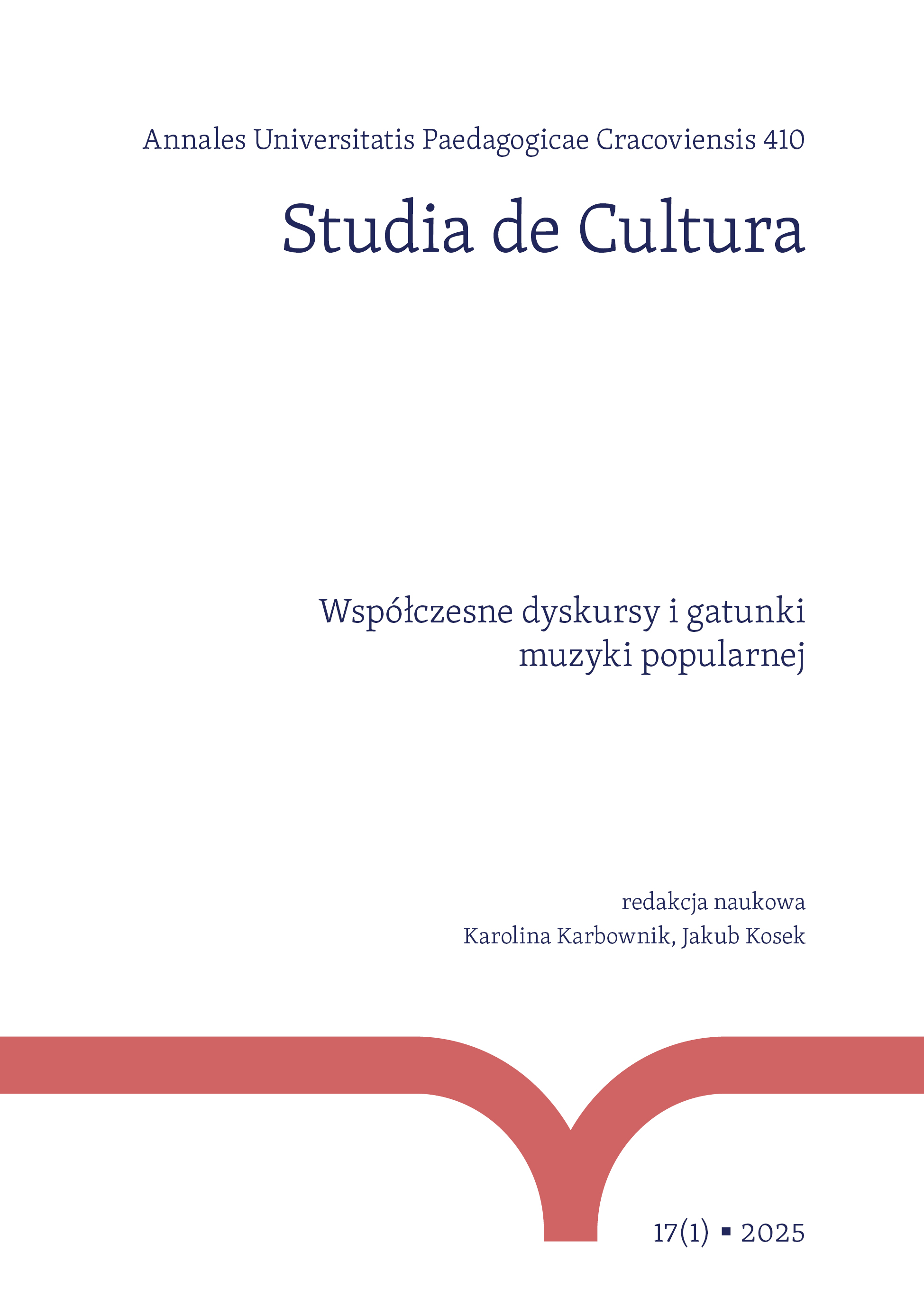Abstract
The article analyses how Mastodon’s album Leviathan interprets Melville’s Moby Dick, treating the songs as a form of musical ekphrasis. The lyrics reference both the plot and themes of the novel, as demonstrated through specific verses and their literary inspirations. Influences from Milton’s Paradise Lost reveal that the album’s exploration of madness is dominated by themes of evil – embodied by Lucifer and Captain Ahab, who, in his rebellion and desire for revenge, confronts Moby Dick as an ambivalent symbol of malevolence. The white whale represents an ancient, terrifying entity, while the ocean becomes its locus terribilis. Thus, Mastodon’s album not only captures the terror and depth of the Melville’s novel, but also becomes part of a narrative immersed in the world of literature.
References
Bańka Józef. 1995. „O tak zwanej drugiej «filozofii pierwszej» Plotyna”. Folia Philosophica t. 13. 7–19.
View in Google Scholar
Bardziński Filip. 2016. Pojęcie hybris w kulturze i filozofii greckiej. Ethics in Progress vol. 7, nr 2. 31–57.
View in Google Scholar
Chlebowski Piotr. 2011. Całość jako kategoria formotwórcza i estetyczna w rocku progresywnym. Uwagi wstępne. W: Unisono w wielogłosie, t. 2: W kręgu nazw i wartości. Radosław Marcinkiewicz (red.). 105–130.
View in Google Scholar
Glenn Barbara. 1976. „Melville and the Sublime in Moby-Dick”. American Literature vol. 48, nr 2. 165–182.
View in Google Scholar
Jędrzejko Paweł. 2007. Melville w kontekstach czyli prolegomena do studiów melvilllistycznych. Kierunki badań – biografia – kultura. Sosnowiec–Katowice–Zabrze.
View in Google Scholar
Jędrzejko Paweł. 2008. Płynność i egzystencja. Doświadczenie lądu i morza a myśl Hermana Melville’a. Sosnowiec–Katowice–Zabrze.
View in Google Scholar
Kosiba Jowita. 2022. „Krąg mitów arturiańskich w twórczości Johna Ronalda Reuela Tolkiena i Andrzeja Sapkowskiego”. Tematy i Konteksty nr 12(17). 363–388.
View in Google Scholar
Melville Herman. 2018. Moby Dick czyli biały wieloryb, t. 1 i 2. Bronisław Zieliński (przeł.). Warszawa.
View in Google Scholar
The New Melville Studies. 2019. Cody Marrs (red.). Cambridge.
View in Google Scholar
Philbrick Nathaniel. 2001. In the Heart of the Sea: The Tragedy of the Whaleship Essex. London.
View in Google Scholar
Rogers Ben. 1998. „From Mocha Dick to Moby Dick: Fishing for Clues to Moby’s Name and Color”. Names. A Journal of Onomastics vol. 46, nr 4. 263–276.
View in Google Scholar
Ruggiero Vincezno. 2002. „Moby Dick and the Crimes of the Economy”. The British Journal of Criminology vol. 42, z. 1. 96–108.
View in Google Scholar
Sachs Aaron. 2022. Up from the Depths: Herman Melville, Lewis Mumford, and Rediscovery in Dark Times. Princeton.
View in Google Scholar
Shulman Robert. 1987. Social Criticism and Nineteenth-Century American Fictions. Columbia.
View in Google Scholar
Schueller Malini Johar. 1994. „Colonialism and Melville’s South Seas Journeys”. Studies in American Fiction vol. 22, nr 1. 3–18.
View in Google Scholar
Skwara Marta, Skwara Marek. 1992. „Stultifera navis. Z dziejów motywu”. Teksty Drugie. Teoria Literatury, Krytyka, Interpretacja nr 3(15). 72–92.
View in Google Scholar
Szewczyk Władysław. 2014. „Transgresja – czy człowiek potrafi siebie przekraczać?”. Teologia i Moralnośćvol. 9, z. 2(16). 155–165.
View in Google Scholar
Waszakowa Krystyna. 2000. Podstawowe nazwy barw i ich prototypowe odniesienia. Metodologia opisu porównawczego. W: Studia z semantyki porównawczej. Nazwy barw, nazwy wymiarów, predykaty mentalne, cz. I. Renata Grzegorczykowa, Krystyna Waszakowa (red.). Warszawa. 17–28.
View in Google Scholar
Wierzbicka Anna. 2006. The Semantics of Colour: A New Paradigm. W: Progress in Colour Studies I: Language and Culture. Carole P. Biggam, Christian Kay (red.). Amsterdam–Philadelphia. 1–24.
View in Google Scholar
Łucarz Stanisław SJ. 2014. Woda w starożytności greckiej i biblijnej. W: Oblicza wody w kulturze. Łukasz Burkiewicz, Piotr Duchliński, Jarosław Kucharski (red.). Kraków. 11–18.
View in Google Scholar
Schwarz Paul. Where Swims the Leviathan. CoC with Brann Dailor from Mastodon, http://www.chroniclesofchaos.com/articles.aspx?id=1-666 (dostęp: 07.04.2024).
View in Google Scholar
Ten Classics in Ten Minutes–HemanMelville’s Moby-Dick, https://www.youtube.com/watch?v=pKhUoFCBhNE (dostęp: 07.04.2024).
View in Google Scholar

This work is licensed under a Creative Commons Attribution-NonCommercial 4.0 International License.
Copyright (c) 2025 Annales Universitatis Paedagogicae Cracoviensis. Studia de Cultura

